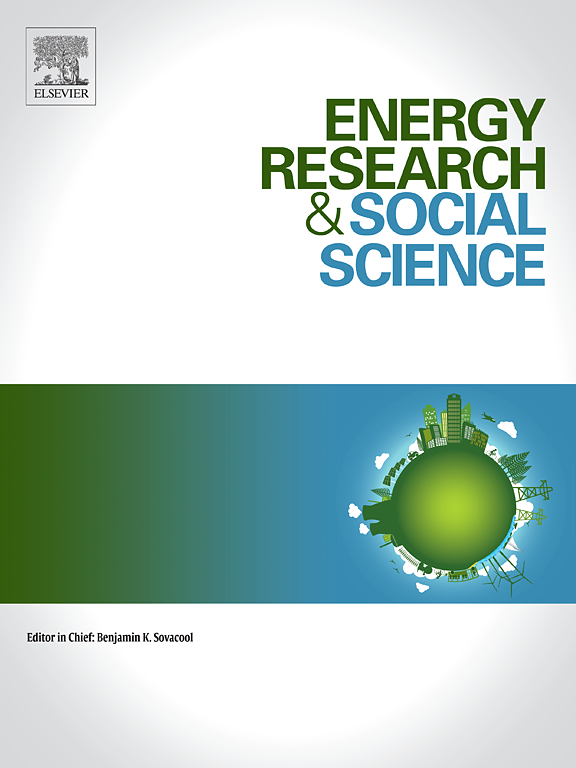国际蓝碳项目管理:比较日本与西方国家蓝碳项目的概念、创新风格及共同影响
IF 6.9
2区 经济学
Q1 ENVIRONMENTAL STUDIES
引用次数: 0
摘要
蓝碳生态系统越来越多地被纳入全球实现净零排放的国家计划。然而,尽管最近对蓝碳项目的社会政治和体制方面进行了研究,但挑战仍然与项目管理有关。例如,在蓝碳项目研究中代表性不足的非英语国家,既有蓝碳项目管理成功的证据,也面临保护政策在当地执行不力等问题。为了解决这一差距,提高全球对蓝碳项目管理方法的理解,我们进行了半结构化访谈和电子邮件问卷调查,以确定两个日本蓝碳项目的表意符号类型、创新风格和共同影响,并将其与使用相同类型分析的两个西方案例研究进行了比较。结果表明,日本的案例研究在国家政府、私营企业和地方实体之间有着高度的利益相关者合作,并且非常强调恢复的共同利益,而不是关注碳封存。这一趋势与西方的两个案例研究形成鲜明对比,这两个案例研究强烈关注碳封存,但在政策支持和利益相关者包容方面遇到了困难。日本的案例研究显示出强大的体制潜力,但仍需克服与碳封存测量不确定性和阻碍恢复的环境影响有关的挑战。我们将当地利益相关者和组织的参与归因于日本高水平的蓝碳项目实施,并建议对其他日本项目和研究中代表性不足的国家的项目进行研究,以进一步了解适应当地条件的不同方法和策略的优缺点。本文章由计算机程序翻译,如有差异,请以英文原文为准。
International blue carbon project management: Comparing the ideographs, innovation styles, and co-impacts of Japanese blue carbon projects to western countries
Blue carbon ecosystems are increasingly included in national plans to reach net zero emissions worldwide. However, despite recent studies on the sociopolitical and institutional aspects of blue carbon projects, challenges remain relating to project management. For instance, non-English speaking countries, which are underrepresented in blue carbon project studies, both show evidence of successful blue carbon project management and face issues such as insufficient local implementation of protection policies. To address this gap and improve global understanding of blue carbon project management methods, we conducted semi-structured interviews and email questionnaires to identify the typologies of ideographs, innovation styles, and co-impacts of two Japanese blue carbon projects and compare them to two western case studies analyzed using the same typologies. The results showed that Japanese case studies had high stakeholder collaboration between the national government, private corporations, and local entities and placed strong emphasis on co-benefits of restoration rather than focusing on carbon sequestration. This trend contrasts with two Western case studies that focused strongly on carbon sequestration but struggled with policy support and stakeholder inclusion. Japanese case studies showed strong institutional potential, but challenges related to carbon sequestration measurement uncertainties and environmental impacts that impeded restoration still need to be overcome. We attribute inclusion of local stakeholders and organizations to the high levels of blue carbon project implementation in Japan and recommend studies on other Japanese projects and projects in countries underrepresented in research to further understand the strengths and weaknesses of different methods and strategies to adapt to local conditions.
求助全文
通过发布文献求助,成功后即可免费获取论文全文。
去求助
来源期刊

Energy Research & Social Science
ENVIRONMENTAL STUDIES-
CiteScore
14.00
自引率
16.40%
发文量
441
审稿时长
55 days
期刊介绍:
Energy Research & Social Science (ERSS) is a peer-reviewed international journal that publishes original research and review articles examining the relationship between energy systems and society. ERSS covers a range of topics revolving around the intersection of energy technologies, fuels, and resources on one side and social processes and influences - including communities of energy users, people affected by energy production, social institutions, customs, traditions, behaviors, and policies - on the other. Put another way, ERSS investigates the social system surrounding energy technology and hardware. ERSS is relevant for energy practitioners, researchers interested in the social aspects of energy production or use, and policymakers.
Energy Research & Social Science (ERSS) provides an interdisciplinary forum to discuss how social and technical issues related to energy production and consumption interact. Energy production, distribution, and consumption all have both technical and human components, and the latter involves the human causes and consequences of energy-related activities and processes as well as social structures that shape how people interact with energy systems. Energy analysis, therefore, needs to look beyond the dimensions of technology and economics to include these social and human elements.
 求助内容:
求助内容: 应助结果提醒方式:
应助结果提醒方式:


